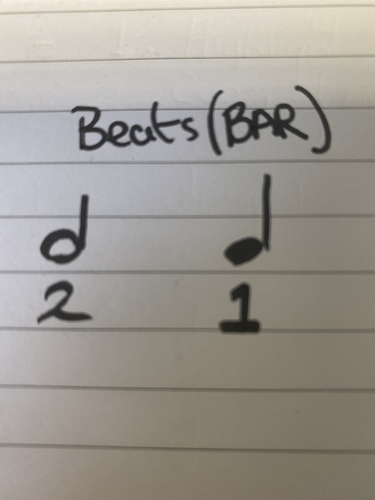Definitely think twice about that but it’s more of a beginner rule. For instance, parallel 5ths works great for bass lines however, it doesn’t really work as a main line.
Alternatively it occasionally works in certain modes such as Aolian, blues scale and Locrian (though I rarely use Locrian).
This “classical” approach derived from college level composition and is based in the idea that there are certain things you should avoid (at first) to make your life easier. Other rules that are often in-learned as we progress include
- not doubling the 5th
- the 7th (leading tone) must always rise
- suspensions should always be prepared and resolved
There’s a few more which are much more basic. The truth is that all of these can be broken but if you follow them then you are actually making your life a little easier in terms of counterpoint options.
Not sure if any of you are good with reading music but here is a short example. I’ve labelled it as best as I can to show where I broke the rules, and how I rectified it.
Before I start for those who don’t know anything about reading music we are in G major in the example, where the clef on the upper staff curls around the second line, that is G natural, coins up your scale and down the scale from there. The lower staff has a bass clef and it curls around the F (these clefs are also known as G and F clef to make it easier) just count up or down from F. The notes with a line through them are C (also known as ledger lines).
Here’s a simple guide for the note values (I may do a theory lesson on this actually)
These are the only ones I’ve used
First I started with 5ths moving in 4ths. So I can use 5ths but I chose not to let them move in parallel (otherwise the harmony for the perfect cadence in bar 2 wouldn’t work).
I then used an uplrepardd suspension to create some movement between parts while including contrary movement in the alto part (notes with the arrow going down in bar 1)
I then tied the A over which is good practice for separate part writing, I kept the baseline strong by including the tonic on the bottom, so inversions here 
The 7th is in the Tenor part, this makes the 7th really stand out. If I were to put it in the upper parts it would have bleed out a little more.
Finally thr alto and tenor parts resolve in unison to a D natural which is also a compound 5th…
This is essentially how I would approach avoiding this parallel 5th issue while also keeping it as musical as I could.
![]()

 ) mainly because I wrote the opening theme as a brass fanfare and then followed it with a variation in the woodwinds, but at a pause in the wind part, I hear just a couple of pizzi strings to fill in, but the transition back to the wind part is jarring and sounds off-kilter. Haven’t found the solution yet.
) mainly because I wrote the opening theme as a brass fanfare and then followed it with a variation in the woodwinds, but at a pause in the wind part, I hear just a couple of pizzi strings to fill in, but the transition back to the wind part is jarring and sounds off-kilter. Haven’t found the solution yet. )
)
 ) so it’s been girly full on, meaning I’m categoric in the evenings, but this is starting to get easier as I climatise. So this Friday I’ll be recording a follow up to the Trailer piece, then at some point early next week I’ll release the horn video for this series, and maybe even the percussion video.
) so it’s been girly full on, meaning I’m categoric in the evenings, but this is starting to get easier as I climatise. So this Friday I’ll be recording a follow up to the Trailer piece, then at some point early next week I’ll release the horn video for this series, and maybe even the percussion video.
 I’m really excited to do the following videos. I’m not sure if it came across how much I’m loving this series
I’m really excited to do the following videos. I’m not sure if it came across how much I’m loving this series 


